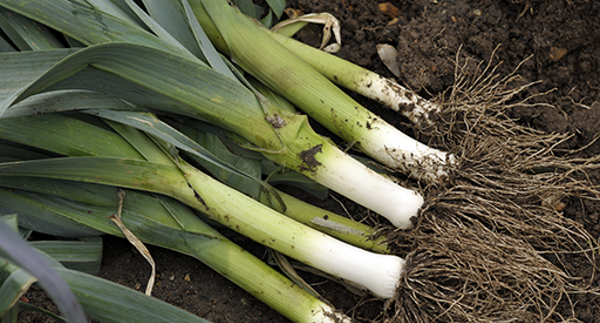
5 Steps to Leek Success
- Choose a sunny spot for successful leeks.
- Prepare your soil well - leeks enjoy well drained soil with plenty of organic matter like compost and sheep pellets.
- Add a layer of vegetable mix to plant into. Leeks enjoy some cooler weather and grow well planted in autumn and spring.
- Feed every four weeks during key growth periods with vegetable food to boost growth.
- Keep your leeks consistently watered.
Follow our full guide below for a bumper crop of homegrown leeks.
The soft, sweet onion-like flavour of leeks is quite magical. Whether leeks are served on their own or added to soups, stews or stir-fries.
Leeks differ from onions in that they don’t form large, round blubs; instead, the base of a leek is a series of leaves that sits above and below the ground.
Prepare
A relatively easy crop to grow, leeks take around five months to harvest.
Leek is a brilliant crop to enjoy in the colder areas of the country, as they seem to taste sweeter the further south they are grown.
Leeks enjoy a spot in full sun in well-cultivated soil. They will happily grow in garden beds, raised planters and deep pots.
Refer to our Planting Calendar for when to plant and harvest leeks in your region.
Top leek varieties to plant include Cardiff, Defiant, Lungo Della Riveria, Musselburgh and Winter Giant.
Plant
Like building a house a good foundation is the key to success in your garden. The better the soil, the better your plants will grow. If you are starting with an existing garden bed dig in organic matter like Tui Sheep Pellets and Tui Compost to your soil. Then you can add a layer of Tui Vegetable Mix. If planting in pots and containers, fill with Tui Vegetable Mix.
The best times to plant are early in the morning or late in the day, so the plants aren’t exposed to the hot sun straight away.
Space seedlings approximately 20cm apart in rows, with no less than 50cm between rows.
Planting in garden beds
- Water plants thoroughly before planting and allow to drain.
- Add a layer of Tui Vegetable Mix to the planting area.
- Dig a hole, approximately twice the depth and width of the root ball of your plant.
- Gently loosen the root ball of your plant and position the plant in the centre of the hole.
- Fill in with Tui Vegetable Mix.
- Press soil gently around the base of the plant.
- Water your plant well and continue to water regularly.
Planting in pots and containers
- Water plants thoroughly before potting and allow to drain.
- Half fill your container with Tui Vegetable Mix.
- Gently take the plant from the current container, loosen the root ball and remove any loose or dead plant material and roots.
- Position the plant in the centre of the new container and fill with Tui Vegetable Mix up to 3cm from the top.
- Gently firm mix around the base of the plant. The mix should be at the same level on the plant as it was in the previous container.
- Water your plant well and continue to water regularly.
Protect your plants from the elements with layers of Tui Pea Straw Mulch, to help keep their roots moist and keep your garden weed free.
Nourish
Feed your plants and they will feed you. Leeks use nutrients from the soil as they grow, so replenishing the nutrients ensures your plants grow to their full potential.
Select a fertiliser specially blended for your crop like Tui Vegetable Food. Feed leeks planted in containers with Tui NovaTec® Premium fertiliser.
For supercharged feeding with quick visible results try Tui Vege & Herb Liquid Superfood.
Well watered, well nourished leeks will have a better chance of keeping insect pests and diseases at bay. Ensure the soil doesn't dry out over the warmer months.
While your leeks are growing regularly apply a dose of Tui Organic Seaweed Plant Tonic to give them a welcome boost and help resist heat, frosts, pests and disease.
Harvest
Dig leeks up with a fork once ready in approximately five months. They will keep well in the soil over the cooler months, however can go to seed easily once the soil warms up. Store in the fridge for up to two weeks once harvested.
If aphids are an issue, treat with a suitable control from your garden centre, and next season plant leeks in another space. Ensure you don't plant leeks or other members of the allium family (onions, garlic, or chives) in the affected spot, for one to two seasons.